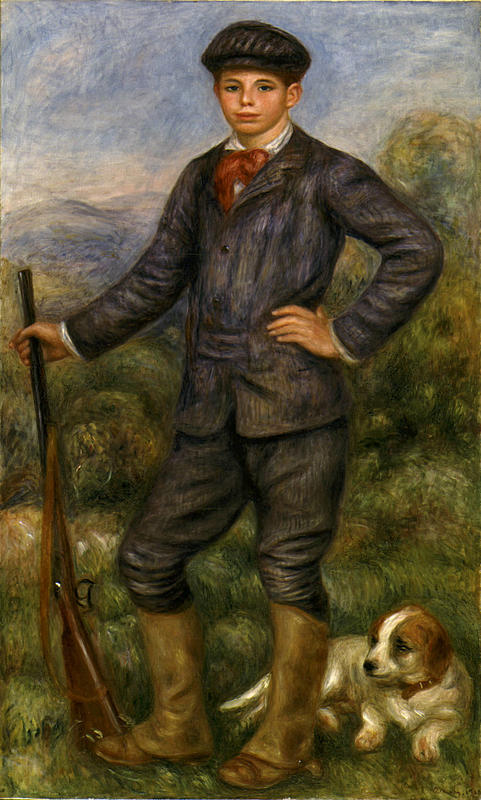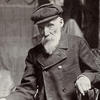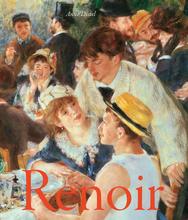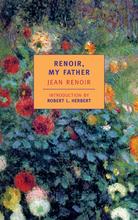More about Jean as a Huntsman
- All
- Info
- Shop

Sr. Contributor
Pierre Auguste Renoir paints his son Jean as the least intimidating huntsman ever.
Here is a riddle of sorts: How did one of the fathers of Impressionism become a grandfather to modern cinema? The answer is enshrined in this painting and perhaps deceitfully simple; by siring a child who was a filmic genius.
The painting’s story goes like this: in his old age, arthritic Renoir took to shuffling around his home in France painting pictures of his family. On one of these days Renoir found a large golden frame that he simply had to fill with a large brush-stroked painting. He then grabbed his nearest child (his hands couldn’t grab at this point so maybe more like prodded) and commanded that they model for him. Fifteen year old Jean Renoir was the lucky offspring that day and Renoir told him something like, “go put on that jacket that makes you look like a hunter and then stand in this field holding a gun!” You know, dad stuff. Jean was not a hunter and the jacket’s ability to suggest he was a sporting fellow was the entire inspiration for the pose, title, and use of the adorably unthreatening family dog “Bob” as a hunting hound.
Jean may not have been into hunting but he would become very familiar with the feel of guns. In 1913 he joined the French Calvary where he served as an officer and a pilot. It was during this three year stint that he received a leg wound, which purportedly would randomly open throughout his life and begin to bleed everywhere. This may be a gross rumor but we do know that it was during his convalescence that he discovered his love of the cinema.
So now we see our connection. Renoir, a father of Impressionism, begat Jean, who is one of the greatest directors of all time. It should be noted that Renoir Sr. discouraged his son’s directorial ambitions, and though Jean’s short attempt at his father’s suggested career of ceramics was successful, the siren call of the silver screen could not be ignored. His career started slowly and sometimes he had to pawn his father’s paintings for production money, but eventually he made it. And made it big. His film La Grande Illusion (1937) is often praised as one of the finest examples of World Cinema in history and in 1939 it became the first foreign language film to ever be nominated for a Best Picture Oscar.
Though Jean’s films were anti-war in message (some were banned), he was a staunch nationalist and rejoined the army in 1939 to fight in WWII…as a lieutenant in the French Army Film Service (apparently that’s a thing?) and wound up teaching film in Rome as an attempt to promote brotherhood between France and Italy. As you may have guessed that didn’t really work out and he eventually moved to the United States where he continued to make movies and receive acclaim until his death in 1979. This painting remained in his family until his widow Dido passed away and donated it to the LACMA in 1990.
Who would have thought that that sweet young man with his bored but kind eyes would ever make a film titled On purge bebe (1931) (Baby’s Laxative) or La Chienne (1931) (The Bitch)? Or that a man who made movies with those titles would win a Lifetime Achievement Oscar? As Professor Ping says in Barbarella (1968), with cinematography by Claude Renoir (grandson and nephew to Pierre-August and Jean Renoir respectively), “genius is mysterious.”













